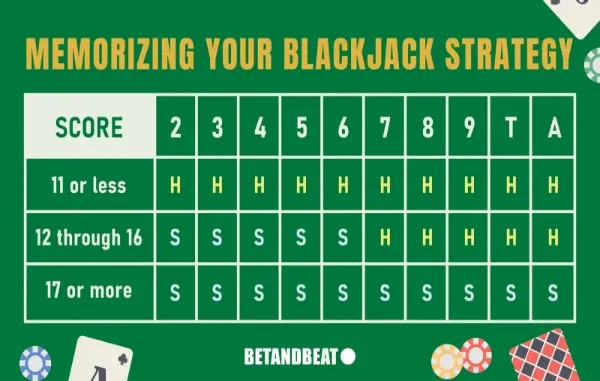
Originating from the French game ‘Vingt-et-Un‘ (Twenty-One) in the 17th century, Blackjack has transcended time to become a precious fixture in casinos everywhere. It invites players on a quest to reach the magic number 21 without going over while testing their decision-making abilities and promises the thrill of winning big.
However, mastering this game requires a deep understanding of its fundamental principles and strategies. Accordingly, this article is designed to guide beginners through its intricacies, starting with the core concepts and gradually advancing towards more sophisticated ones to improve the prospects of success at the table.
Understanding the Basics
Before starting to play real money online blackjack, grasping the core principles unlocks the excitement of this favourite casino game. Here are four tips to guide beginners through the basics.
1. Learn the objective and card values.
The primary goal is to beat the dealer’s hand without exceeding a total of 21. Cards 2 through 10 are worth their face value, while Kings, Queens, and Jacks are valued at 10. Aces can be worth either 1 or 11, depending on which is more beneficial for the hand.
2. Familiarize yourself with the mechanics.
Each game begins with the player receiving two cards, face up, and the dealer one card up and one down. Players must decide whether to ‘Hit’ (take another card), ‘Stand’ (keep their current hand), ‘Double Down’ (double the wager, taking precisely one more card), or ‘Split’ (if two cards are of the same value, divide them into two hands) based on their hand and the dealer’s visible card.
3. Understand hard vs. soft hands.
A ‘soft’ hand contains an Ace counted as 11 without busting, which offers flexibility in hand options. A ‘hard’ hand either does not contain an Ace, or the Ace can only be valued as 1 to avoid busting. This influences decision-making, especially when deciding whether to hit or stand.
4. Grasp the dealer’s constraints.
Unlike players, the dealer must follow strict rules: hitting on 16 or below and standing on 17 or above. This rule can influence your approach, particularly in determining when to take risks and when to play it safe.
The Importance of a Blackjack Strategy Chart
A strategy chart visually represents a player’s optimal moves based on their hand and the dealer’s visible card to ensure players minimize mistakes and improve their chances of winning. This chart outlines whether to hit, stand, double down, or split in every potential game situation – it’s basically a guide for decision-making, thanks to its foundation on mathematical probabilities.
Following the chart’s recommendations, players can level the playing field with the casino and base their decisions on statistical logic instead of instinct. It’s like having a partner in navigating the game’s complexities.
More Advanced Techniques
Here are seven refined strategies that elevate a player’s ability to outsmart the competition:
1. Mastering card counting.
This technique involves tracking the ratio of high to low cards remaining in the deck. Players adjust their bets based on the count. This means that a higher concentration of high cards favours the player and suggests larger bets.
2. Shuffle tracking.
Shuffle tracking is a step beyond card counting that allows players to follow specific card sequences or clusters through shuffles. This requires acute observation and the ability to anticipate where those cards will appear in the new deck arrangement.
3. Exploring side bets.
Side bets present additional winning opportunities separate from the main game’s results. For instance, the 21+3 side bet merges blackjack with three-card poker dynamics. This bet relies on combining the player’s first two cards and the dealer’s up card to create a three-card poker hand. Potential winning hands such as flushes, straights, three-of-a-kind, straight flushes, or suited triples offer varied payouts that boost the potential winnings beyond the standard game.
Another engaging side bet is the Perfect Pairs wager, which bets on the chance that the player’s initial two cards will be a pair. This bet categorizes pairs into three types:
- A perfect pair (identical cards)
- A coloured pair (same colour, different suits)
- A mixed pair (different suits)
Each type commands its own payout rate.
4. Reading dealer tells.
Skilled players can gain an edge by interpreting subtle cues from the dealer, such as body language or hand movements, to gauge the strength of the hidden card.
5. Ace sequencing.
This involves memorizing the cards that appear around aces and predicting when an ace will be dealt to take action.
6. Identifying favourable deck penetration.
The depth to which a dealer goes into the shoe before reshuffling affects the game’s predictability. Players with a keen eye for deck penetration can adjust their strategies for better outcomes.
7. Practising true count conversion.
For multi-deck games, converting the running count into a true count provides a more accurate representation of the deck’s status. This leads to more precise betting and playing decisions.
—
Writer: Charlon Muscat

Leave a Reply